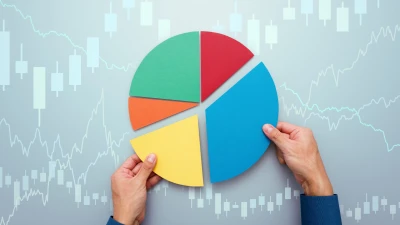More than just sin avoidance



The next generation of investors and analysts are taking sustainable investment to a new level – moving beyond traditional ESG analysis to ESG v2.0 or ‘better future investing’. ESG integration in its current form is largely mainstream, with the Responsible Investment Association Australasia (RIAA) reporting that 89% of funds under management in Australia are managed responsibly.
But increasingly ESG v2.0, which shifts the focus on to the intentionality of the invested company and whether it is creating a better future rather than just having sound ESG credentials, is coming to the forefront. There are two critical parts to this: understanding what constitutes a truly sustainable investment and ensuring there is a strong alignment between profit and purpose.
This next iteration of sustainable investment allows investors pure play access along the transition to a more sustainable and better future instead of simply avoiding the ‘sin stocks’ such as gaming, alcohol, weapons, and tobacco, etc.
Today, the market and investors have become more sophisticated as investors can access companies that are positively contributing towards a better future while also presenting compelling returns. To do this, we must look at the intentionality of the company. It is not about investing in Westpac or NAB because one may have a better diversity policy. Rather, it means investing in a company whose business purpose is to, say, pull carbon out of the system.
The reason these companies can present themselves as a sound investment is a growing case study. We have seen an increasing frequency and severity of extreme weather events, with Australia not immune. In the past two years, Australia has seen devastating bushfires and one in 100-year floods. Governments across the world have acted in support of reducing carbon emissions as a means of tackling climate change. But, more importantly, innovative companies continue to supply solutions to this challenge, and innovation doesn’t stop at climate change.
From a sustainable innovation perspective, we see companies providing solutions to improve healthcare outcomes, treatment of water and waste, the internet of things, the proliferation of education – and more.
While we see wonderfully innovative companies providing solutions or products to sustainability challenges, it is important to analyse the companies’ ESG intentions to better understand how sustainable it truly is.
The Perennial Better Future Trust has taken it a step further to establish our proprietary environmental, social, governance and engagement score (ESG&E Score) to assess a company’s commitment to all aspects of sustainability.
Based on our internally-generated research, each company is given a score for environmental, social and governance performance (20%) and a score for ESG engagement (40%). This provides a total score out of 10 that is then compared with the benchmark (the S&P/ASX Small Ordinaries Accumulation index). We then construct a portfolio of between 25 to 70 stocks, with each company requiring an ESG&E Score better the benchmark to be eligible.
Don’t get me wrong, being aware of what you don’t invest in is still important. For example, we have a zero-revenue threshold for tobacco, alcohol, weapons, thermal coal, oil and gas, gambling, pornography, toxic pesticides, old growth forest logging or live exportation of animals offshore.
A zero-revenue threshold results in a zero allowance for any activities outlined as excluded. But the bigger picture is examining what you do invest in to nurture an investment portfolio of companies that are actively addressing sustainability challenges and contributing to a better future as these companies create compelling investment stories.
The investment benefits of allocating resources to such stocks are clear; many are achieving increased growth and demand, often globally, that can generate strong returns for investors. Renewable energy is an example of a sector that demonstrates the long-term global growth opportunities because of the universal need to urgently address climate change. Again, ESG v2.0 is about targeting those businesses that are helping to shape a better future.
In our opinion, the tragic war in the Ukraine, which has seen a spike in oil and gas prices, does not alter the long-term imperative to switch from fossil fuels to renewable sources of energy. In fact, we believe it has heightened the need for investment for energy security, of which renewable energy will be of key factor.
Although while the Ukrainian invasion has created a paradigm shift for decarbonisation, we believe there are forces at play that create both investment opportunities and energy efficiency outcomes.
Take Calix for example - Calix is an industrial solutions company dedicated to solving global sustainability challenges. One of the uses of their technology is a process to separate carbon dioxide in the lime and cement production process. The lime and cement industry is responsible for ~9% of global greenhouse gas emissions. This process, called LEILAC, is now in collaboration with some of Europe’s largest cement and lime companies and therefore addressing the emissions in this sector is critical as we progress towards a net zero emissions economy.
Following its successful partnership with European lime and cement companies, Calix is now involved in the decarbonisation process of three Australian companies, having won Government funding in May 2022 to collaborate with Boral, Adbri and Pilbara Minerals. These grants with a combined value of $61 million will allow Calix to support the decarbonisation efforts of these Australian companies with its market-leading innovative technologies.
Boral received $30 million from the Australian Government’s Carbon Capture, Use and Storage (CCUS) Hubs and Technologies Program to develop a CCUS project at its cement and lime facilities, for which Calix will be supplying its LEILAC technology. Similarly, Calix received $11 million from the CCUS program to develop the world’s first commercial-scale process for the manufacture of low emissions lime with Adbri.
Regarding Pilbara Minerals, the company received $20 million under the Australian Government Modern Manufacturing Initiative (MMI), which will be used as part of a joint venture with Calix for the progression of a demonstration scale facility at the Pilgangoora Project. The grant is expected to assist in delivering substantial sustainability benefits across the lithium industry, through electrification of the refining process, thereby enabling decarbonisation.
In our opinion, Australia is well placed to be an integral part of this fundamental change in the global energy mix, and investors want to be involved. They are increasingly looking to generate returns from the strong tailwinds for companies addressing sustainability challenges and creating a better future.
While not investing in the ‘sin stocks’ can still be a valuable tool, focusing on what you do own is a beneficial evolution in the space and we believe that the Australian small and mid-cap marketplace is proving to be a fruitful arena for these types of businesses.
Damian Cottier is Perennial Better Future Trust portfolio manager.
Recommended for you
Managing currency risk in an international portfolio can both reduce the volatility, as well as improve overall returns, but needs to be navigated carefully.
In today’s evolving financial landscape, advisers are under increasing pressure to deliver more value to clients, to be faster, smarter, and with greater consistency.
Winning one premiership can come down to talent, luck, or timing but winning multiple ones indicates something deeper and successful is at play, writes Darren Steinhardt.
As fixed income markets evolve, advisers are questioning how to deliver consistent income, manage downside risk, and diversify exposures, all while navigating an uncertain interest rate environment











